#Sui-Tang Dynasties Ancient Canal Town
Photo
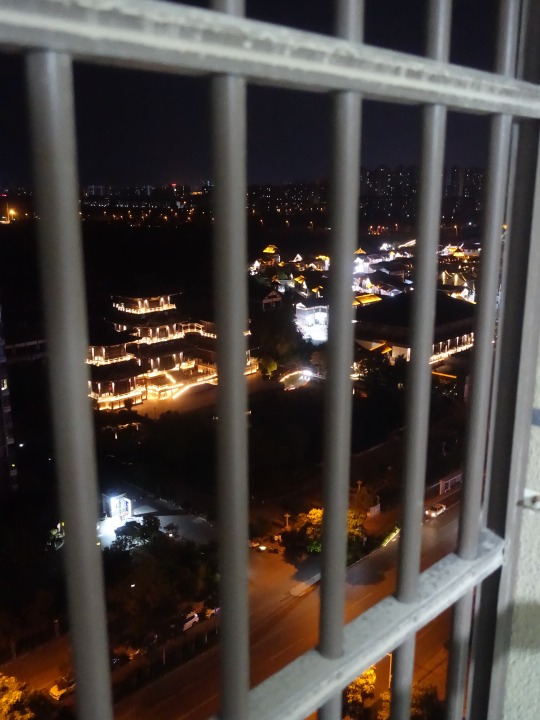
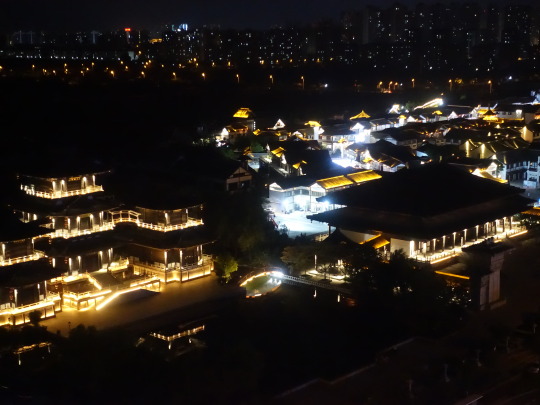
隋唐运河古镇的夜景。
Night views of the Sui-Tang Dynasties Ancient Canal Town in Huaibei.
1 note
·
View note
Text
Foreign relations of Japan/wako English bibliography
Chen Chingho 1960, ‘Chinese junk trade at Nagasaki at the beginning of the Qing Dynasty’, New Asia Journal (Hong Kong), 1.3: 25-50, 273-332.
J. P. Delgado, Khubilai Khan's lost fleet: in search of a legendary armada (Berkeley and Los Angeles: University of California Press, 2008).
G. Elison 1988, ‘The Priest Keinen and His Account of the Campaign in Korea, 1597-1598: An Introduction’, in Motoyama Yukihiko kyoju taikan kinen rombunshu henshu iinkai, ed. Nihon kyoikushi ronso: Motoyama Yukihiko kyoju taikan kinen rombunshu (Kyoto: Shibunkaku shuppan)
W. Enomoto 2012, ‘The current state of research on the history of Japan’s contacts with other countries in the first half of the medieval period’, AA 103: 95-120.
J. A. Fogel (ed.) 2002, Sagacious monks and bloodthirsty warriors: Chinese views of Japan in the Ming-Qing period (Norwalk CT: Eastbridge).
J. A. Fogel (ed.) 2007, Crossing the Yellow Sea: Sino-Japanese cultural contacts 1600-1950 (Norwalk CT: EastBridge 2007).
J. A. Fogel 2013, ‘Sino-Japanese shipping connections as reported in Chinese and Japanese sources’, SJS 20
R. von Glahn 2014, ‘The Ningbo-Hakata merchant network and the reorientation of East Asian maritime trade, 1150–1350’, HJAS 74: 249-279.
A. E. Goble 2009, ‘Kajiwara Shozen (1265-1337) and the medical Silk Road: Chinese and Arabic influences on medieval Japanese medicine’, in A. E. Goble, K. R. Robinson and H. Wakabayashi (eds), Tools of culture: Japan’s cultural, intellectual, medical, and technological contacts in East Asia, 1000s-1500s (Ann Arbor, Michigan: Association for Asian Studies), pp. 231-257
A. E. Goble, K. R. Robinson and H. Wakabayashi (eds) 2009, Tools of culture: Japan’s cultural, intellectual, medical, and technological contacts in East Asia, 1000s-1500s (Ann Arbor, Michigan: Association for Asian Studies).
M. Guang 2017, ‘Tributary ceremony and national security: a reassessment of Wokou diplomacy between China and Japan during the early Ming Dynasty’, Journal of Asian History 51: 27–54.
Y. Hashimoto 2012, ‘Korea in Muromachi culture: cultural exchange between Japan and Korea and between Ryukyu and Korea’, AA 103: 23-52.
B. H. Hazard 1967, 'The formative years of the Wako', MN 22:260277
B. Hazard 1976, ‘The wako and Korean responses’, in J. B. Parsons, ed., Papers in honor of Professor Woodbridge Bingham: a festschrift for his seventy-fifth birthday (San Francisco: Chinese Materials Center) .
S. M. Hong-Schunka 2005, ‘An aspect of East Asian maritime trade: the exchange of commodities between Korea and Ryukyu (1389-1638)’, in A. Schottenhammer, ed., Trade and transfer across the East Asian “Mediterranean” (Wiesbaden: Harrassowitz), pp. 125-161
H. M. Horton 2012, Traversing the frontier : the Man'yoshu Account of a Japanese mission to Silla in 736-737 (Cambridge MA: Harvard University Press).
K-J. Hur & Y-S. Cho 2016, ‘Aspects of Korea-Japan cultural exchanges analyzed through Tongshinsa delegations during the National Seclusion period’, Athens journal of history 2.2: 129-136.
K. Ito 2008, ‘Japan and Ryukyu during the fifteenth and sixteenth centuries’, AA 95: 79-99
E. Hae-Jin Kang 1997, Diplomacy and ideology in Japanese-Korean relations from the fifteenth to the eighteenth century (New York; St Martin’s Press)
E. H. Kang 1998, ‘Diplomacy and Ideology in Early Modern Korean-Japanese Relations’, in Sang-Oak Lee and Duk-Soo Park, eds, Perspectives on Korea(Sydney: Wild Peony)
C-S. Kim 2010, ‘Parhae’s maritime routes to Japan in the eighth century,’ Seoul journal of Korean studies 23: 1-22.
M. Laver 2012, 'Diplomacy, piracy, and the space between: Japan and East Asia in the medieval period', in K. F. Friday, ed., Japan emerging: premodern history to 1850 (Boulder CO: Westview Press)
J. B. Lewis (ed.), 2015. The East Asian war, 1592-1598: international relations, violence, and memory (Abingdon: Routledge).
G. Ma 2017, ‘Tributary ceremony and national security: a reassessment of Wokou diplomacy between China and Japan during the early Ming Dynasty’, JAH 51: 27-54.
G. M. McCune 1948, ‘The Japanese trading post at Pusan’, Korean review 1: 11-15.
S. Ogura 1991, 'About two Japanese scrolls: "Sea map - trade with the state of Jiazhi" and "Avalokitesvara"', in Ancient town of Hoi An: an international symposium held in Danang on 22-23 March 1990 (Hanoi: Foreign Languages Publishing House), pp. 128-134
H. Okamoto 2008, ‘Foreign policy and maritime trade in the early Ming period: Focusing on the Ryukyu kingdom’, AA 95: 35-55
S-R. Park 1992, ‘Korea-Japan Relations and the History of Science and Technology’, Korea Journal 32.4: 80-88
J. Reckel 1995, Bohai. Geschichte und Kultur eines manschurisch-koreanischen Kônigreiches der Tang-Zeit (Wiesbaden: Harrassowitz Verlag)
K. R. Robinson 1996, ‘The Tsushima governonr and regulation of Japanese access to Choson in the fifteenth and sixteenth centuries’, Korean studies 20: 23-50
K. R. Robinson 1996, ‘The Tsushima governonr and regulation of Japanese access to Choson in the fifteenth and sixteenth centuries’, Korean studies 20: 23-50
K. R. Robinson 1997, ‘The Jiubian and Ezogachishima embassies to Choson, 1478-1482’, Chosenshi kenkyukai ronbunshu 35: 55-86
K. R. Robinson 1999, ‘The imposter branch of the Hatakeyama family and Japanese-Choson Korea court relations’, Ajia bunka kenkyu 25: 67-88
K. R. Robinson 2000, ‘Centering the King of Choson: aspects of Korean maritime diplomacy, 1392-1592’, JAS 59: 109-125
K. R. Robinson 2001, 'Treated as treasures: the circulation of sutras in maritime Northeast Asia, from 1388 to the mid-sixteenth century', EAH 21: 33-54
K. R. Robinson 2006, ‘An island's place in history: Tsushima in Japan and in Choson, 1392-1592’, Korean studies 30: 40-66
K. R. Robinson 2009, ‘A Japanese trade mission to Choson Korea, 1537-1540: the Sonkai tokai nikki and the Korean tribute system’, in A. E. Goble, K. R. Robinson and H. Wakabayashi (eds), Tools of culture: Japan’s cultural, intellectual, medical, and technological contacts in East Asia, 1000s-1500s (Ann Arbor, Michigan: Association for Asian Studies), pp. 71-101
K. R. Robinson 2010, ‘Japanese presence, Korean military bases, and Korean maps in the late fifteenth century’, Acta Koreana 13.1: 7-34.
K. R. Robinson 2015, ‘Violence, trade, and imposters in Korean-Japanese relations, 1510-1609’, in J. B. Lewis, ed., The East Asian War, 1592-1598: international relations, violence, and memory (Abingdon: Routledge), pp. 42-69.
E. D. Rockstein 1973, ‘Maritime Trade and Japanese Pirates: Chinese and Korean Responses in Ming Times’, Asian and Pacific Quarterly of Cultural and Social Affairs 5.2: 10-19
K. Saeki 2003, 'The Hakata merchant Sokin and relations with East Asia in the Muromachi period', Interactions and transformations: bulletin of the JSPS 21st Century COE Program (Humanities; Kyushu University), 1: 167-182.
B. Seyock 2005, ‘Pirates and traders on Tsushima island during the late 14th to the early 16th century: as seen from historical and archaeological perspectives’, in A. Schottenhammer, ed., Trade and transfer across the East Asian “Mediterranean” (Wiesbaden: Harrassowitz), pp. 91-124
K-W. So 1975, Japanese piracy in Ming China during the 16th century (Michigan State UP).
T. Takatsu 2008, ‘Ming Jianyang prints and the spread of the teachings of Zhu Xi to Japan and the Ry?ky?kingdom in the seventeenth century’, in Angela Schottenhammer, ed., The East Asian ‘Mediterranean’: maritime crossroads of culture, commerce and human migration (Wiesbaden: Harrassowitz), pp. 253-270.
Y. Takekoshi 1940, The story of the Wako, Japanese pioneers in the southern regions (Kenkyusha, Tokyo)
K. Tashiro 1976, 'Tsushima-han's Korean trade, 16841710', AA 30: 85-105
H. Tono 1995, 'Japanese embassies to T'ang China and their ships', AA 69: 39-62.
T. Uezato 2008, ‘The formation of the port city of Naha in Ryukyu and the world of maritime Asia: From the perspective of a Japanese network’, AA 95: 57-77
C. von Verschuer 2003, 'Official missions to Tang China and information technology', in Soaring the Silk Road : Japanese Envoys to the Sui and Tang (Nara: Research Center for Silk Roadology)
C. von Verschuer 2004, 'Across the sea : intercourse of people, know-how, and goods in East Asi'", in Murai Shôsuke, ed., 8-17 seiki no higashi Ajia chiiki ni okeru hito, mono, jôhô no kôryû (Tokyo: Tokyo University Press), vol. 1, pp. 13-28.
C. von Verschuer 2005, 'Journal de voyage de Jôjin en 1072: la vie sur le Grand Canal dans la Chine des Song ', Revue d'Etudes Japonaises du CEEJA 1 (Colmar : Centre européen d’études japonaises d’Alsace), pp. 79-124.
C. von Verschuer 2006, Across the perilous sea : Japanese trade with China and Korea from the seventh to the sixteenth centuries, trans. K. L. Hunter (Ithaca, NY: East Asia Program, Cornell University)
C. von Verschuer 2007, ‘Ashikaga Yoshimitsu’s Foreign Policy 1398 to 1408 A.D.: a translation from Zenrin Kokuhôki, the Cambridge Manuscript’, MN 62: 261-298
C. von Verschuer 2011, ‘Les relations diplomatiques entre la Chine et le Japon au début du XVe siècle, d’après une lettre adressée par l’empereur Yongle au shôgun Ashikaga Yoshimochi ', Société des historiens médiévistes de l’Enseignement supérieur public, ed., Les relations diplomatiques au Moyen Âge (Paris: Publications de la Sorbonne), pp. 197-208.
C. von Verschuer 2011, ‘Les relations diplomatiques entre la Chine et le Japon au début du XVe siècle, d’après une lettre adressée par l’empereur Yongle au shôgun Ashikaga Yoshimochi ', Société des historiens médiévistes de l’Enseignement supérieur public, ed., Les relations diplomatiques au Moyen Âge (Paris: Publications de la Sorbonne), pp. 197-208.
G. Wade 2007, 'Ryukyu in the Ming reign annals 1380s-1580s', Asia Research Institute Working Paper Series No. 3
http://www.ari.nus.edu.sg/showfile.asp?pubid=676&type=2
M. Watanabe 2008, 'An international maritime trader -Torihara Sôan: the agent for Tokugawa Ieyasu's first negotiations with Ming China, 1600', in A. Schottenhammer, ed., The East Asian 'Mediterranean': maritime crossroads of culture, commerce and human migration (Wiesbaden: Harrassowtz), pp. 169-176.
M. Yamamoto 2008, ‘The Gusuku period in the Okinawa Islands’, AA 95: 1-17
T. Yamawaki 1976, 'The great trading merchants, Cocksinja and his son', AA 30: 106-116.
Peter D. Shapinsky. Lords of the Sea: Pirates, Violence, and Commerce in Late Medieval Japan (Michigan Monograph Series in Japanese Studies) Peter D. Shapinsky
Aleko LiliusI, Sailed With Chinese Pirates by Oxford University Press, US, October 17, 1991
Fabio Rambelli. The Sea and the Sacred in Japan: Aspects of Maritime Religion. Bloomsbury Publishing, 12. 7. 2018
So, Kwan-wai. Japanese Piracy in Ming China During the sixteenth Century. Michigan State University Press, East Lansing, 1975. ISBN 0-87013-179-6
0 notes
Text
BEST DESTINATIONS IN CHINA
1) Beijing
Beijing, the capital of China, has served as a capital of the country for more than 800 years. The city has many places of historic interest and scenic beauty, including the Forbidden City - the largest and best-preserved ancient architectural complex in the world; the Temple of Heaven - where Ming and Qing emperors performed solemn rituals for bountiful harvests; the Summer Palace - the emperors' magnificent garden retreat; the Ming Tombs - the stately and majestic mausoleums of 13 Ming Dynasty emperors; and the world-renowned and genuinely inspiring Badaling section of the Great Wall.
2) Shanghai
Shanghai is one of the world largest seaports and China major industrial as well as commercial center. With the deepening reform, the city, formerly crowned as the financial, economic and trade hub of the Far East, is playing a leading role in boosting economic development of China. Meanwhile, the city has attracted more and more tourists from home and abroad for its unique charm. As one of the noted historic and cultural citied in the country, Shanghai has more than 70 sites of historical interest and cultural relics, which best represent the distinctive characteristic of Shanghai regional culture. What is more, Shanghai is the Paradise of gourmets, who may find thousands of restaurants here that serve a complete list of China's major famous cuisines and various foreign foods.
3) Xi'an - Home of the Terracotta Warriors
Xian, an ancient capital of China, is your gateway to know about ancient Chinese civilization. In its 3,100 recorded years of evolution, it has been the capital of 13 dynasties, including the Zhou, Qin, Han, the Sui, and Tang dynasties, periodically from the 11th century B.C. to the early 10th century AD. Touring in Xi'an, you can breathe the historical air from all the must-see spots. major attractions in Xi'an include the Qin Terracotta Army - "the 8th wonder of the world", the Big Wild Goose Pagoda - the most outstanding landmark of Xi'an, Banpo Neolithic Village Museum - the remains of a 6,000 year-old village once home to a matriarchal clan community, and the Xi'an City Wall which stretches round the old city.
4) Hong Kong - Shopping paradise
Hong Kong is located on south coast of China, 60 km (37 mi) east of Macau on the opposite side of the Pearl River Delta, north to Shengzhen. It boards Guangdong city of Shenzhen to the north over the Shenzhen River, Wanshan Islands of Zhuhai in Guangdong Province to the south. It consists of Hong Kong Island, Kowloon Peninsula, the New Territories and other 262 small islands.
Hong Kong is a highly prosperous international metropolis now, and one of the third largest financial centers in the world. Hong Kong is famous for magnificient city view with lots of skyscrapers and shopping.
5) Guilin - Scenic city with sensational mountain and river scenery
Situated in South China, Guilin is like a glittering pearl on a green carpet, the scenery here enjoys the praise of "top landscape in the world". The name of the city is derived from the cassia tree called "Guihuashu" in Chinese. One can see the green cassia trees standing at the most roadsides in the town. When the autumn comes, the fragrance of the blossom fills up the air making passengers refreshing and relaxed. In addition, the golden flowers are very pleasing to the eyes.
Guilin is a world-famous scenic city, famous for its unrivalled karst landscape, exquisite mountains, limpid rivers, wired caves and beautiful rocks. Besides the unparallel scenery, the city also boasts its time-honored history. Guilin has been the political, economic and cultural center of Guangxi since more than 1,000 years ago. The Lingqu Canal built 214 B.C. in Xing'an County has witnessed the change during these 2,000 years.
6) Guangzhou - A prosperous and liberal city near Hong Kong
Guangzhou, the capital city of Guangdong Province, is nicknamed the City of Goat. As a city of historic and cultural significance, it is the largest industrial and commercial city and the largest important and export port in South China. It enjoys a humid climate all year around, and flowers blossom in all four seasons, hence its another nickname "the City of Flowers". There are over 150 historical sites and places of interests in the city, plus various modern entertainment facilities. Here, the China Guangdong Export Commodities Fairs is held twice every year.
7) Chengdu - Hometown of China Giant Panda
Chengdu, the capital of Sichuan Province, is a famous historical and cultural city with a history over 3,000 years. Known as the land of abundance, Chengdu boasts plentiful local products, a pleasant climate, a large number of scenic spots and historical sites, and fine traditional handicrafts well known both at home and abroad.According to the records and relics, there was human being living on this piece of land about 3,700 years ago. It is about 2,300 years ago the ninth king Kaiming of ancient Shu State moved his capital to the site and named it 'Chengdu'. Then the name has been kept until today.
8) Hangzhou - Beautiful city with lake view
As one of China's hottest tourists destination, Hangzhou is a “holy and beautiful paradise on earth” which has been circulated for l, 000 years on the Chinese land. It has inherited the historical heritage of mare than 5,000 years. The city has a history of 2.200 years since it was first established as Qiantang County during the Qin Dynasty. Altogether 13 emperors of two dynasties took the throne for 234 years in Hangzhou. Later, Hangzhou has always been the administrative, cultural and economic city (capital city) of Zhejiang Province and is one of the seven ancient capitals in China. Located on the south bank of the Haogzhou Bay of the East China Sea. Hangzhou is 180 km from Shanghai and is an important central city of the Yangtze River delta. Hangzhou has enjoyed the reputation of being the "first prefecture in southeast'. During the Yuan Dynasty Italian traveller Marco Polo lauded. The special local-made products are silk, Xihu silk umbrellas, color-glazed porcelain, Longjing tea, and white chrysanthemum.
9) West Lake in Hangzhou
Suzhou - An ancient city famous for canals and gardens
Founded in 514 BC, Suzhou is one of the oldest towns in Yangtze Basin. Bordering Shanghai on the east, Wuxi City on the west and the Yangtze River on the north, Suzhou enjoys great geography and excellent land, water and air transportation.Suzhou achieved its fame 1,000 years later when the Grand Canal was constructed. And the city remains one of the most beautiful cities in China with its blue web of interlocking canals and classical gardens as well as famous silk industry. It is well-known as the capital of silk. The streets and lanes in its downtown area are of the Song-dynasty style.
As the world of garden, Suzhou is also famous for its ancient gardens which are the gem of classical garden architecture in south China and has been included in the UNESCO heritage list.
10) Sanya - A tropical city with beautiful sand beach
Sanya is a famous coastal tourist city filled with tropical landscapes and local customs. Since Sanya is situated in the southernmost part of China, she has been called "the remotest cape of the earth" since ancient time.The region of Sanya has a long history of human development. There were discoveries of cultural relics of the Old Stone Age. Ancient Persian tombs were found along the coast. As the world famous tourism city, Sanya, has advantages on its air transportation, especially for the international ones. Phoenix Airport is 20 km northwest away from the city. Now, there are 9 international airlines from Singapore, HongKong, Malasia, Thailand, Seoul, Tokyo and Osaka.There is a highway linking the airport and the city center. You can take a taxi or a bus to the city centre. In addition there are direct buses to Sanya Bay and Dadonghai at the airport.
Check out this app for more information: https://www.flickstree.com/video-category.html/TRAVEL_VIDEOS
0 notes
Photo

3 notes
·
View notes
Photo
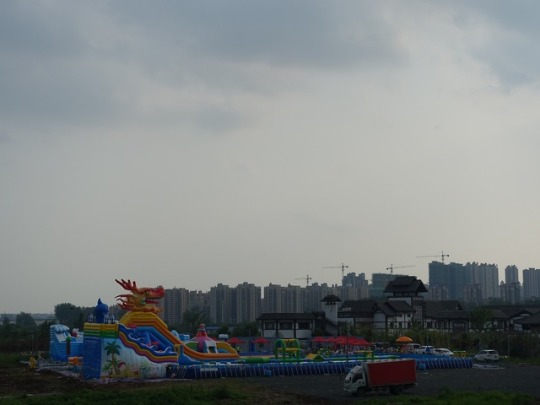

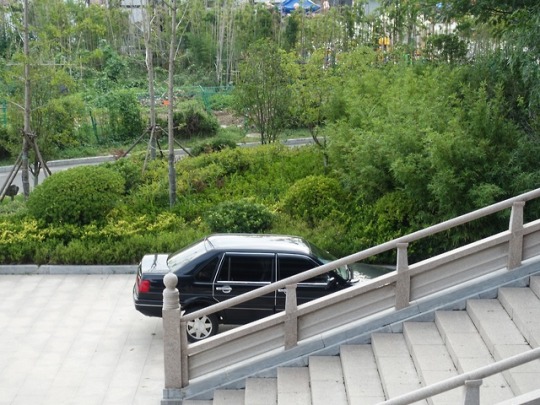
1 note
·
View note
Photo
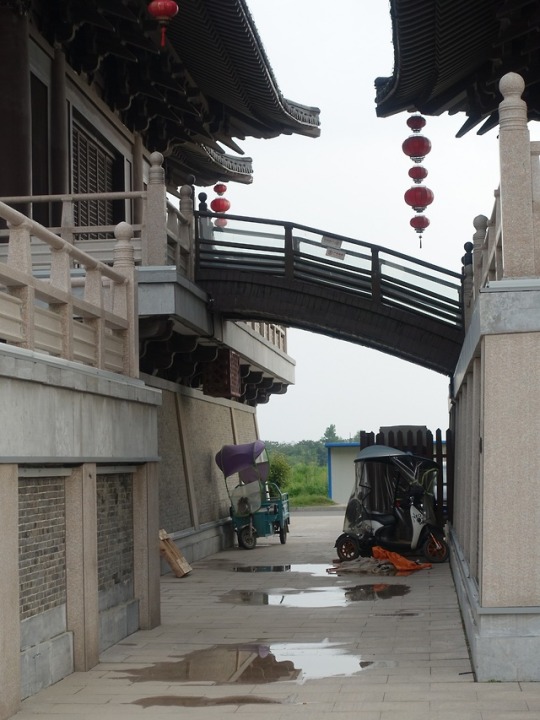
1 note
·
View note
Photo

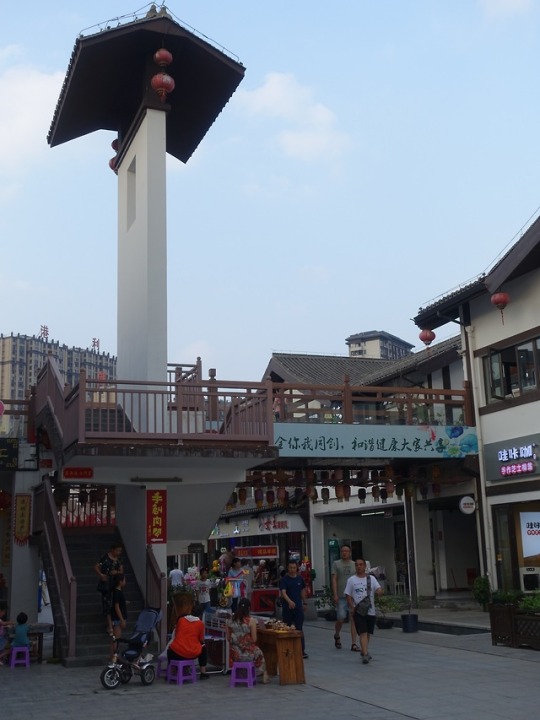





隋唐运河古镇。
Sui-Tang Dynasties Ancient Canal Town.
1 note
·
View note
